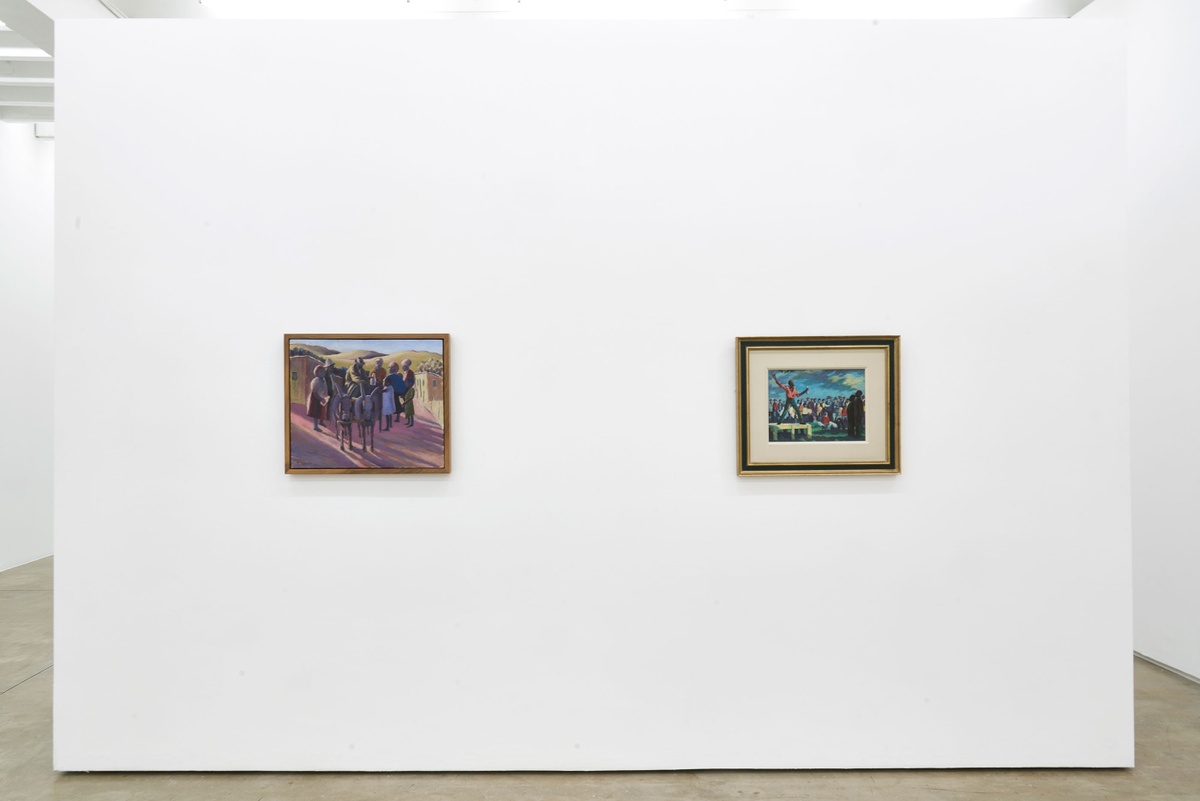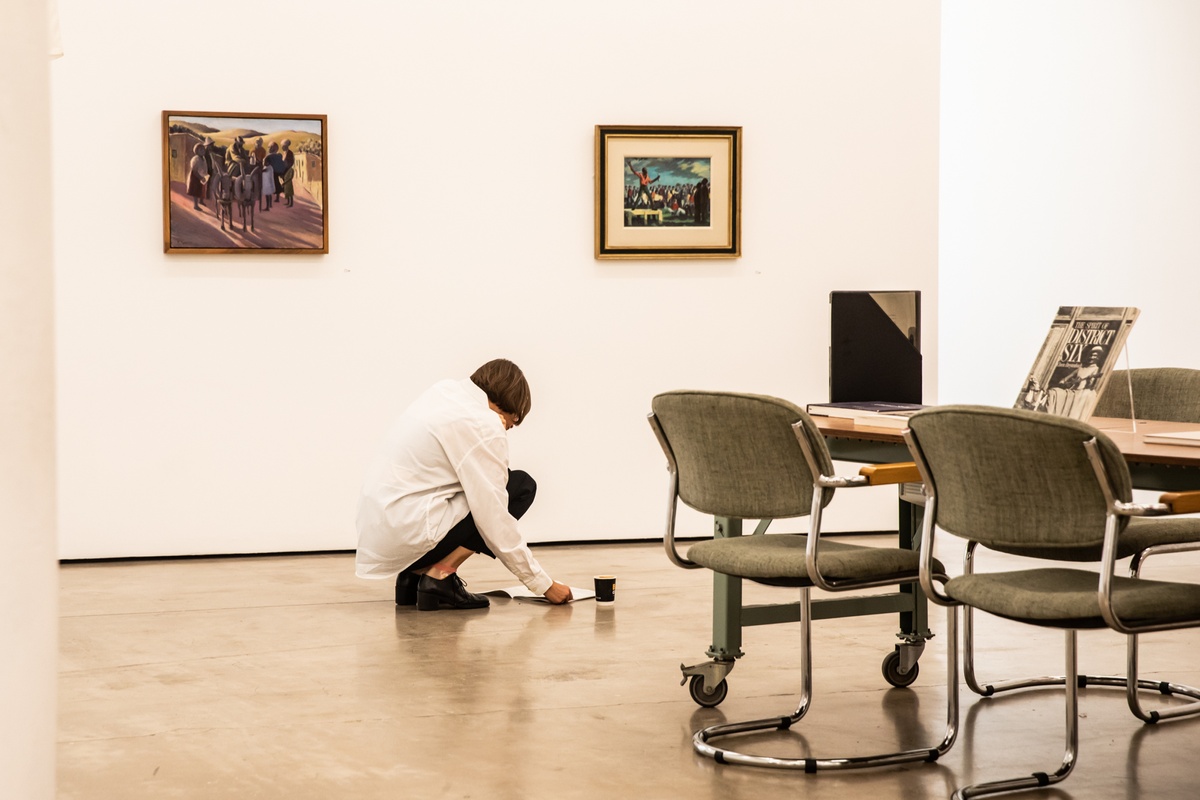Gerard Sekoto
In 1945, Sekoto returned from District Six in Cape Town to his mother's home in Pretoria. The following three years – the artist's 'Eastwood period' – were among his most prolific; his works of the time imbued with a formal confidence and observational clarity. He continued to favour scenes of everyday life, recalling in paint vivid impressions of black urban communities under apartheid. Such is The Milkman, which describes the morning ritual that marked the beginning of each day in Eastwood. This work was first exhibited in Johannesburg in 1947. "His street scenes and the donkey cart, which features in two paintings, are redolent of the atmosphere of the location and its society," one critic wrote at the time. Another wrote that the works "show him to be above all else a painter alive to the problems and lives of his people...in colours sombre or bright, he paints the sadness or gaiety of their lives." Later that same year, at the height of his career, Sekoto left South Africa for France.
b.1913, Botshabelo; d.1993, Nogent-sur-Marne
“All that I do, even outside of South Africa,” Gerard Sekoto wrote, “is still with the eye, the heart and the soul of the land of my birth.” Today counted among the country’s most celebrated modernists, Sekoto’s paintings transcribed everyday life into images of profound humanity. Writing in 1983 under apartheid’s pall, the art historian Esme Berman championed what she called the artist’s primitive style. “None of the tired academic clichés or timid prettiness which so irked the modern spirits were present in the self-taught painter’s work,” she wrote of Sekoto. “The fearless colour, the unconventional viewpoint, even the awkward handling of familiar forms was refreshingly original and honest.” He took as subject the scenes around him – in Sophiatown, District Six, and Eastwood – impoverished areas designated for people of colour. By the 1980s, all three suburbs had been razed under the Group Areas Act. Sekoto, however, did not witness their destruction – he had left for Paris in 1947. The following year, the National Party was elected, and apartheid became state legislation. While he returned often to township scenes in his paintings, Sekoto would never again return to the country of his birth. He died in exile in 1993, shortly before South Africa’s first democratic election.


